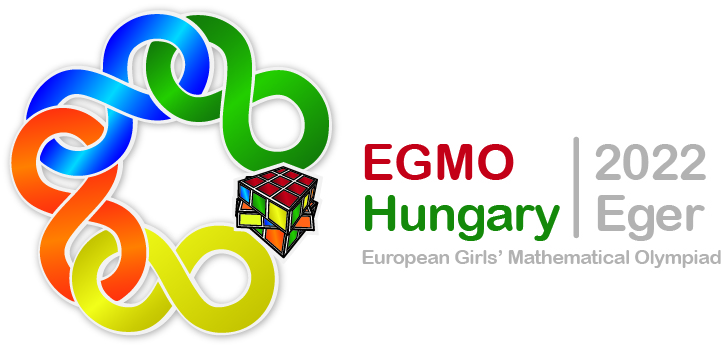The Rubik’s Cube (originally called Magic Cube) displayed in this year’s EGMO logo is a twisty logical puzzle that was invented and patented by the Hungarian architect Ernő Rubik in the 1970’s and has since become popular worldwide.
It consists of 26 little cubes and its six faces are of six different colours. Each face can be rotated, hence changing the arrangement of the little cubes and shuffling the colours on the faces. After a thorough scrambling the goal of the game is to twist the cube cleverly and restore the original colouring.
When Rubik built the first cube it took him over a month to solve it and when the game was released it was notorious for being unsolvable. In 1981 though a 12-year old boy, Patrick Bossert released a book titled You Can Do the Cube explaining how to solve the Rubik’s cube systematically and nowadays there are a wealth of guides available explaining solving algorithms of various efficiency and complicatedness. You can also find guides to create nice patterns on the cube and apps to play with a virtual cube or scan your cube and get help solving it.
Every other year the World Cube Association organises the Rubik’s Cube World Championships, where thousands of participants compete to solve the cube as fast as possible. The first world championship was held in Budapest, Hungary, in June 1982. Nowadays most of the competitors use special cubes designed for speed-solving, which may have little magnets to add stability and be lubricated to make twisting faster. The current world record is 3.47 seconds and the record for blindfolded solving is 14.67 seconds!
The cube is also interesting from a mathematical point of view. Its possible moves form the so-called Rubik’s Cube group, which has been studied extensively. For example understanding its subgroups helps to break down the solving into smaller subtasks, see e.g. Thistlethwaite’s algorithm, published in 1981. It has been proved that the minimal number of moves needed to solve from any configuration is 20 if we consider any rotation of any face as one move and is 26 if we consider a quarter-turn of a face as one move. The bounds on these numbers (called God’s numbers in the face turn metric and the quarter turn metric, respectively) have been improved over many years, heavily using computer assistance. It is an open problem to determine the minimal number of moves needed if we consider any rotation of any layer as one move.
Nowadays the cube can be found around the world and there are also a lot of other versions and related games available, including cubes of other sizes, other polyhedra, board games and other logical puzzles.There is also a touch version allowing visually impaired people to play.
Sources:
https://www.worldcubeassociation.org/
https://en.wikipedia.org/wiki/Optimal_solutions_for_Rubik’s_Cube


